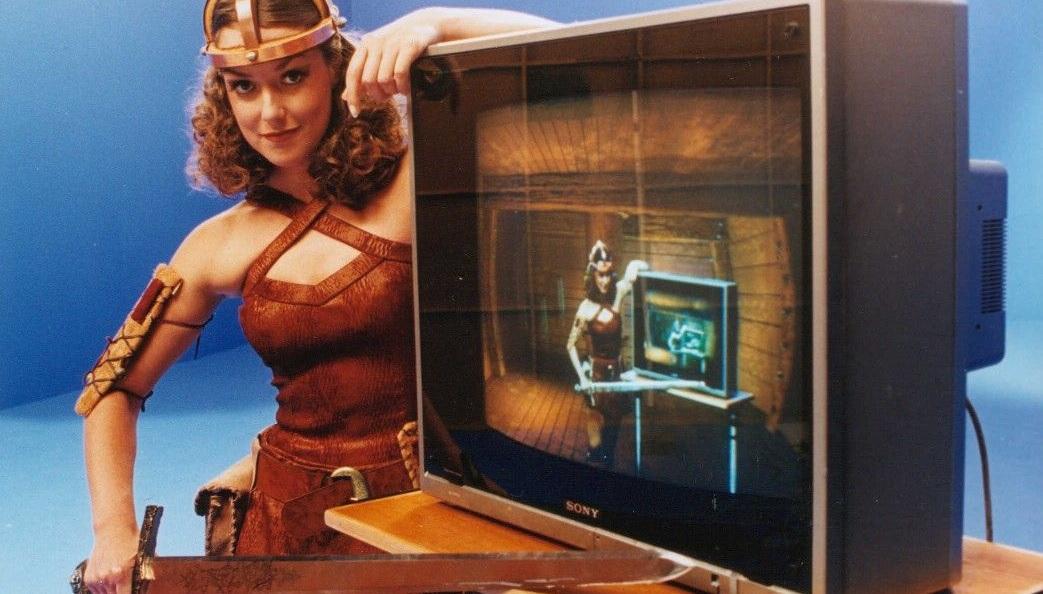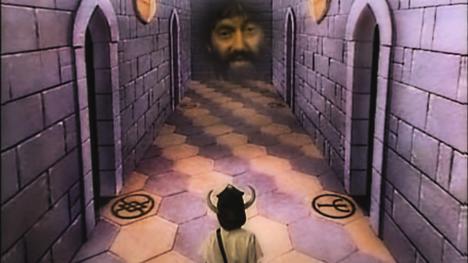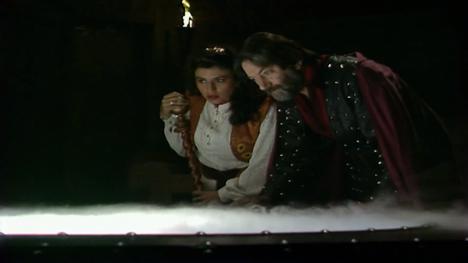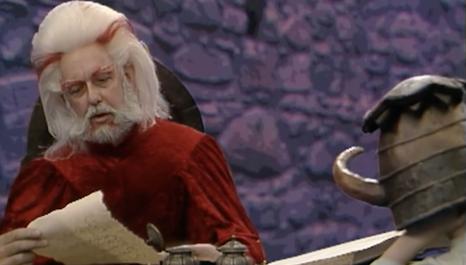The computer graphics and visual effects in Knightmare were edited and controlled by Robert Harris's Travelling Matte Company.
Robert Harris had previously been the Head of Computer Graphics for BBC East, following 10 years designing sets for a variety of programmes.
He was not only responsible for the look and feel of the Knightmare dungeon, but also for managing the graphical elements of the scenes during live gameplay.
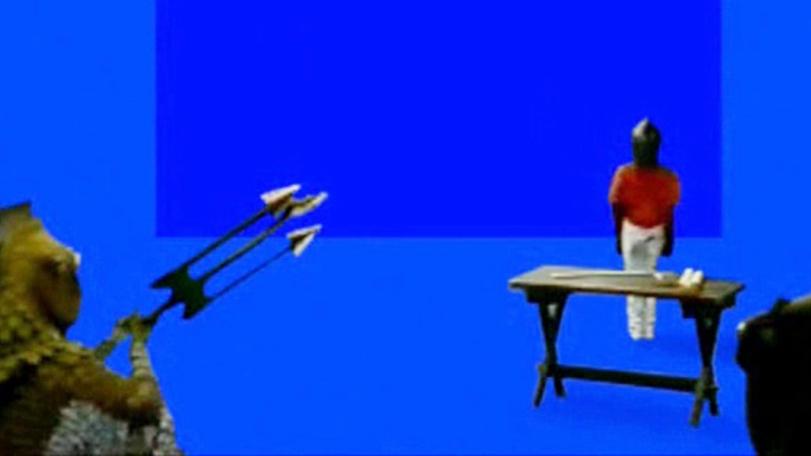
The systems
The original computer was a Spaceward Supernova Paint System. Its features include the same processor as the Amiga 1200, as well as a 600MB hard disk and 12MB RAM.
The operating system and its applications were controlled by pull-down menus on a graphics tablet. The package used to create Knightmare was called Ultimatte.
The company's 24-bit machine was used to superimpose the hand-painted backgrounds onto the blue screen. The less powerful machines were used for basic animations and effects, from adding portcullises to making clues appear and disappear.
DownloadLive demonstration on Kellyvision. (3.72MB)
The rooms
In the early years, the dungeon rooms were painted by artist David Rowe to fit the exact dimensions of the bluescreen set. In later years, shots of real-life locations and CGI textures also contributed to the Knightmare dungeon.
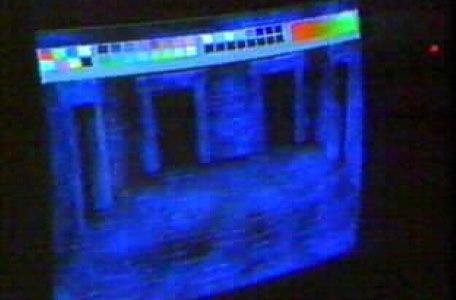
Robert Harris used the Supernova machine to superimpose the paintings, photographs or stills over the blue screen. He then added further colour and lighting using the graphics tablet to create atmospheric dungeon chambers.
This meant that several of Rowe's hand-painted rooms could be used more than once, as lighting and colour made them look different from each other.
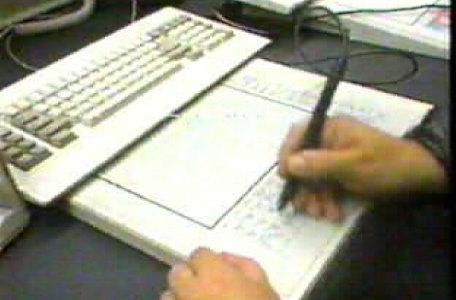
The graphics
Most of the graphics were drawn by a team of illustrators, while props (wellways, staircases, etc.) were built as models. The illustrators worked from sketches that showed how each room should look.
Completed illustrations were scanned into the Supernova Paint Systems for editing and for special effects or animation to be added.
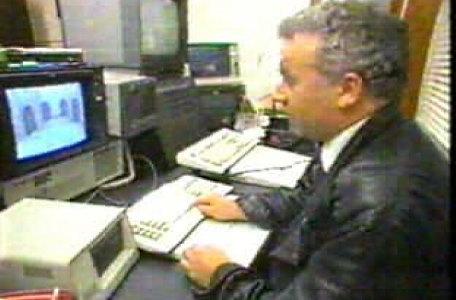
Once stored in the computers, these effects could be added to a room before gameplay started or triggered during a live scene in response to a decision or action that the team had made.
By using computer graphics to reflect the players' choices or performance in the game, this created the sense that they were taking part in a fully-interactive computer game.
A demonstration
Once the dungeoneer enters the first room, Robert makes the four doors display portcullises. He can then reveal the clues on the floor.
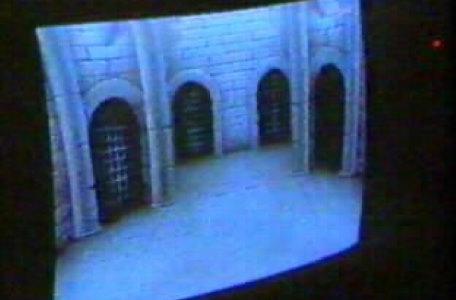
Every time the dungeoneer steps on a correct letter, he can remove this from the floor. When they are all collected, he can 'unlock' one of the doors.
As technology evolved, the animation aspect of Knightmare became more advanced. We eventually saw causeways with falling tiles, moving floors, and motion effects such as fireballs and skeletrons.
The technical aspect of Knightmare was incredible. I didn't know how it was done, or what was going to happen very often. Things would appear that would absolutely amaze me.
Life Force Clocks
Knightmare was famous for its excellent Life Force sequence. This was originally a face which peeled to reveal a skull.
In Series 6 and 7, this was replaced by a 'walking man', which would shed armour to reveal a skeleton. In Series 8, it was represented by a pie.
Screensaver
A screensaver of the newly rendered original Life Force clock is now available, courtesy of YouTube.
